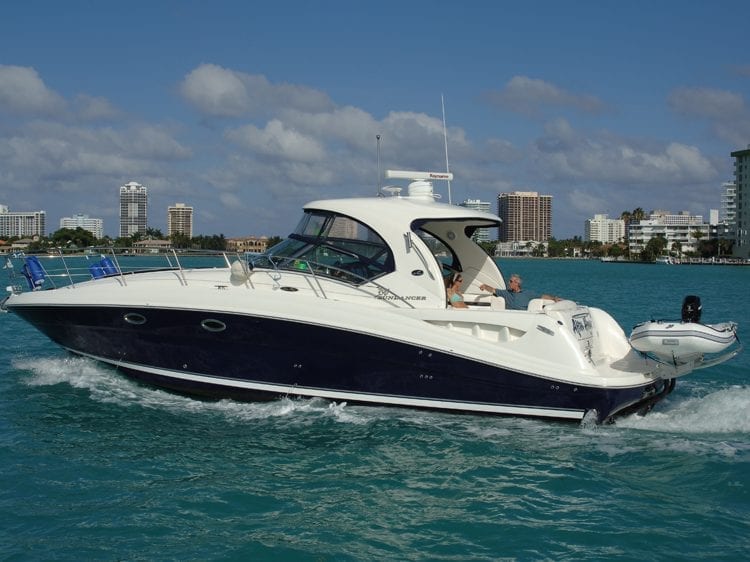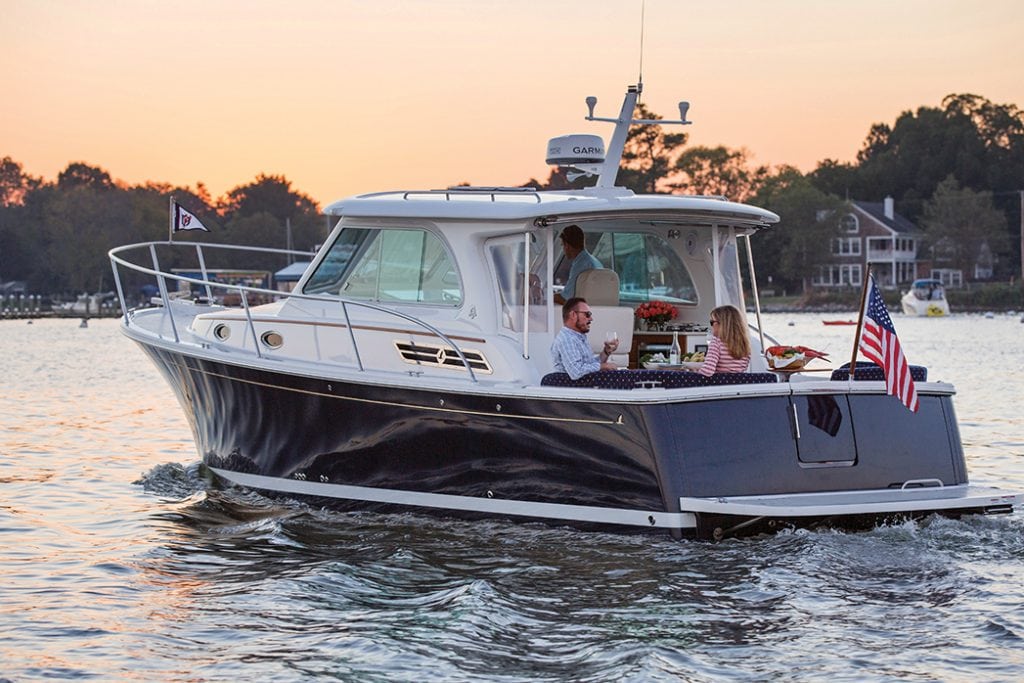Tender Storage
There’s no denying that tenders and RIBS are an absolute necessity when cruising. But what do you do when it comes to tender storage?
Tenders take you from ship to shore and everywhere in between. We’ve said it before, and I’ll say it again: RIBS are a do-it-all wonder. However, you may also wonder the best way to stow that tender.
RIBs often must be stored on a trailer or set of hanging davits. You can tow the tender while underway. Or, you can attempt to pull off the maneuver our friend Captain Chris saw recently and so gallantly recorded.
Tow It
Towing is a cost-efficient and simple way to keep your tender close at hand.
- Use a bridle and install heavy-duty, stainless-steel D-rings on either side of the dinghy’s bow.
- Use at least a three-eighths-inch line and tie w bowline at the end of the tow line and the other ends through the loop. Attach the tag ends of the Y to each D-ring so that the pulling load is evenly distributed.
- Create a Y at the other end of the tow line and attach it to the stern of your boat. Add a float over the line to help keep the line clear from the props.
Keep your entries and departures in mind. Before pulling into the dock or marina, pull the tow line in and lash the bow right to the transom to keep the tender’s movements in sync with the main vessel.
Strap It
Store the tender directly on the swim platform. You can do this with transom clips or stern davits. However, you will lose the use of the swim platform until the tender is removed. Additionally, you’ll have to remove the outboard and store it on deck. NEVER store a tender’s outboard below deck.
Launch it
If your boat’s big enough, you can mount the dinghy on the bow with the engine attached. This requires adding chocks and either a davit or electric crane to remove the tender. It could also restrict your line of sight from the helm, require electrical installation and be more difficult to deploy into the water and board.
Do What This Guy Does
How do you handle tender storage?
Let us know in the comments below!














